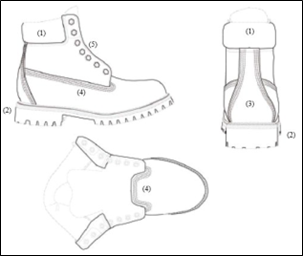The US Court of Appeals for the Fourth Circuit affirmed a $190 million verdict based on deceptive trade practices, concluding that the district court performed well within its discretion in making the procedural ruling and that the jury verdict was fully supported by the evidence. CPI Security Systems, Inc. v. Vivint Smart Home Inc., Legacy Vivint Smart Home, Inc., Case No. 24-1120 (4th Cir. July 22, 2025) (Benjamin, Berner, Niemeyer, JJ.)
CPI Security Systems and Vivint Smart Home are competitors in the home security industry. CPI sued Vivint in 2020 alleging violation of the Lanham Act and North Carolina Unfair and Deceptive Trade Practices Act (UDTPA), and the common law torts of unfair competition and tortious interference with contracts. CPI’s claims were based on allegations that Vivint used deceptive tactics for door-to-door sales that caused CPI customers to confuse Vivint’s salespeople with CPI representatives. CPI alleged that those customers “unwillingly found themselves with Vivint’s alarm systems installed in their homes and with contractual obligations to both Vivint and CPI.”
During trial, CPI presented testimony from customers who had been solicited by Vivint salespeople. The customers all testified to deceptive tactics. For example, one customer testified that a Vivint representative told her Vivint was acquiring CPI and that she would therefore “no longer have CPI for [her] security company.” The customer was “scared and worried” and signed a contract with Vivint. Another customer testified that a Vivint sales representative claimed to be “with CPI” and was “one of the guys that installed [his] CPI system.”
CPI presented additional evidence to show that these practices were “widespread and systematic,” and that Vivint sales representatives had similarly targeted customers of other competitors. Vivint was aware of the conduct, because, for example, “16 state attorneys general had brought enforcement actions against Vivint for its sales agents’ conduct.”
The jury found in favor of CPI and awarded a combination of compensatory and punitive damages totaling nearly $190 million. Vivint appealed.
Vivint argued that CPI failed to prove reliance on the false statements made to CPI customers, which it claimed was an essential element of a UDTPA claim. Vivint argued that CPI itself must have relied on the false statements, rather than just the customers. The Fourth Circuit rejected Vivint’s argument, in part because:
- The UDTPA “is broader and covers more than” fraud.
- CPI’s claim was “grounded on unfair competition.”
- Unfair competition claims do not require a showing of reliance.
Vivint also argued that CPI had not presented sufficient evidence to support the damages award. CPI had presented evidence to support four distinct categories of damages, and the jury did not specify which category or categories were included in each award. The Fourth Circuit explained that CPI was not required “to show an exact dollar amount with mathematical precision” and had presented evidence that “considered as a whole, was sufficient to allow the jury to reasonably estimate that CPI’s [compensatory] damages were $49.7 million.”
Vivint argued that “at minimum, judgment should be vacated and [...]
Continue Reading
read more


 Subscribe
Subscribe



